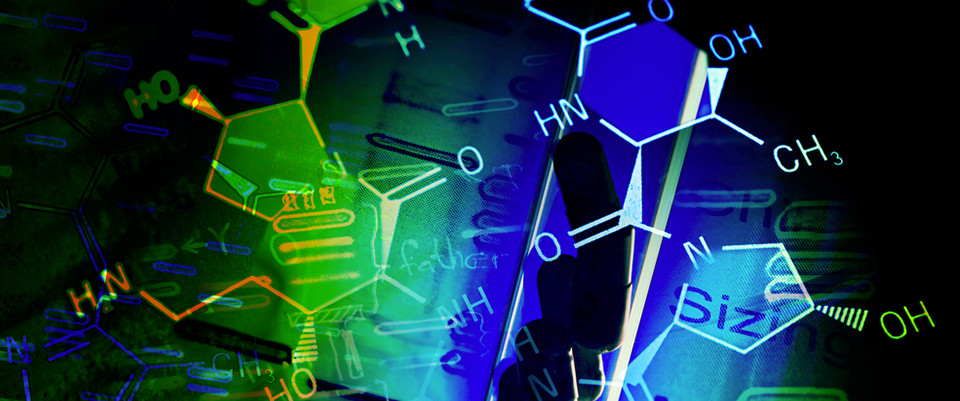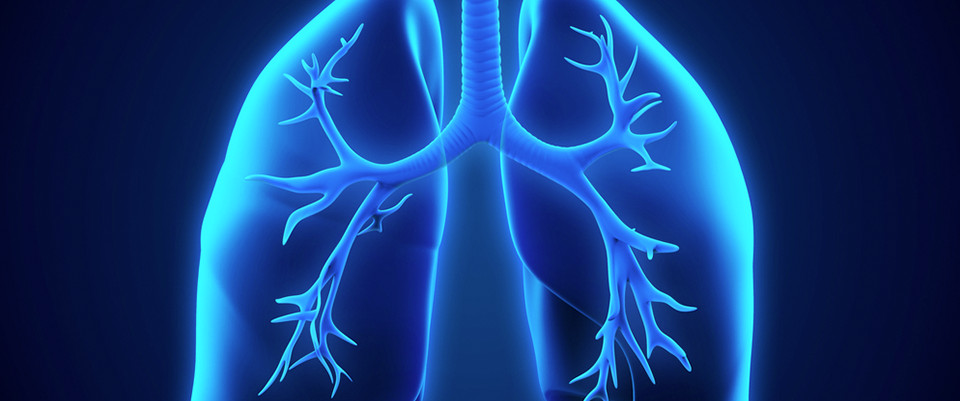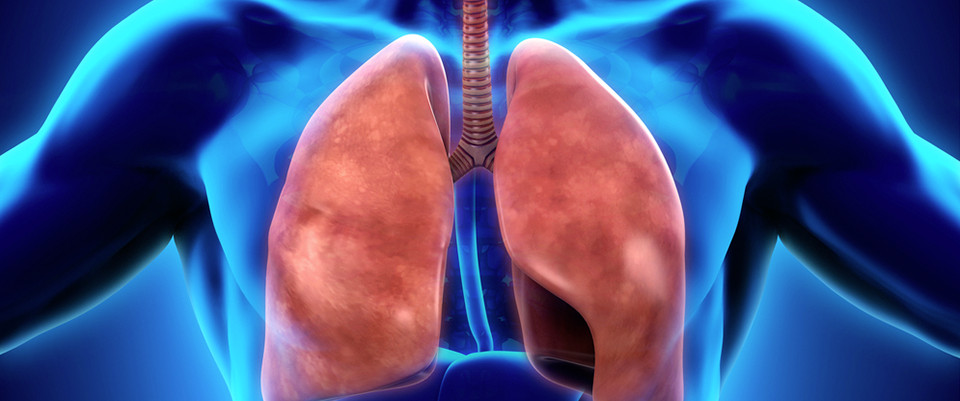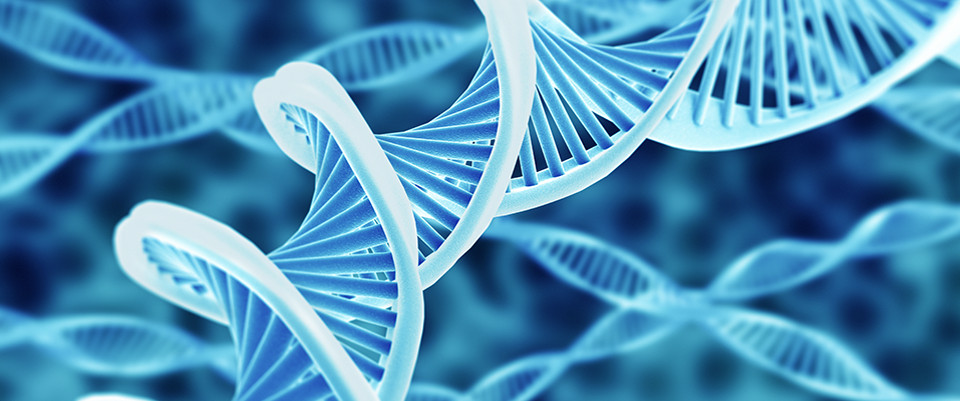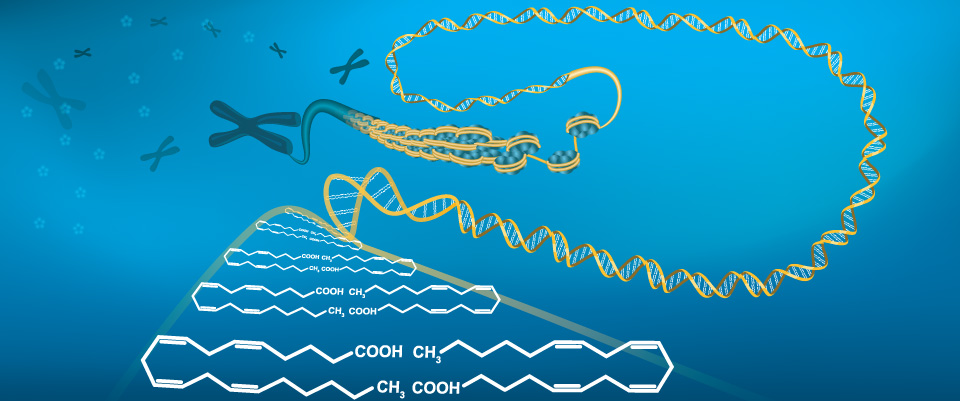PubMed
metabolomics; +23 new citations
23 new pubmed citations were retrieved for your search.
Click on the search hyperlink below to display the complete search results:
metabolomics
These pubmed results were generated on 2019/11/22PubMed comprises more than millions of citations for biomedical literature from MEDLINE, life science journals, and online books.
Citations may include links to full-text content from PubMed Central and publisher web sites.
metabolomics; +23 new citations
23 new pubmed citations were retrieved for your search.
Click on the search hyperlink below to display the complete search results:
metabolomics
These pubmed results were generated on 2019/11/22PubMed comprises more than millions of citations for biomedical literature from MEDLINE, life science journals, and online books.
Citations may include links to full-text content from PubMed Central and publisher web sites.
metabolomics; +18 new citations
18 new pubmed citations were retrieved for your search.
Click on the search hyperlink below to display the complete search results:
metabolomics
These pubmed results were generated on 2019/11/21PubMed comprises more than millions of citations for biomedical literature from MEDLINE, life science journals, and online books.
Citations may include links to full-text content from PubMed Central and publisher web sites.
metabolomics; +18 new citations
18 new pubmed citations were retrieved for your search.
Click on the search hyperlink below to display the complete search results:
metabolomics
These pubmed results were generated on 2019/11/21PubMed comprises more than millions of citations for biomedical literature from MEDLINE, life science journals, and online books.
Citations may include links to full-text content from PubMed Central and publisher web sites.
metabolomics; +23 new citations
23 new pubmed citations were retrieved for your search.
Click on the search hyperlink below to display the complete search results:
metabolomics
These pubmed results were generated on 2019/11/20PubMed comprises more than millions of citations for biomedical literature from MEDLINE, life science journals, and online books.
Citations may include links to full-text content from PubMed Central and publisher web sites.
metabolomics; +23 new citations
23 new pubmed citations were retrieved for your search.
Click on the search hyperlink below to display the complete search results:
metabolomics
These pubmed results were generated on 2019/11/20PubMed comprises more than millions of citations for biomedical literature from MEDLINE, life science journals, and online books.
Citations may include links to full-text content from PubMed Central and publisher web sites.
metabolomics; +19 new citations
19 new pubmed citations were retrieved for your search.
Click on the search hyperlink below to display the complete search results:
metabolomics
These pubmed results were generated on 2019/11/19PubMed comprises more than millions of citations for biomedical literature from MEDLINE, life science journals, and online books.
Citations may include links to full-text content from PubMed Central and publisher web sites.
metabolomics; +19 new citations
19 new pubmed citations were retrieved for your search.
Click on the search hyperlink below to display the complete search results:
metabolomics
These pubmed results were generated on 2019/11/19PubMed comprises more than millions of citations for biomedical literature from MEDLINE, life science journals, and online books.
Citations may include links to full-text content from PubMed Central and publisher web sites.
[Research progress of lipolipomics in primary hepatocellular carcinoma].
[Research progress of lipolipomics in primary hepatocellular carcinoma].
Zhonghua Gan Zang Bing Za Zhi. 2019 Oct 20;27(10):809-812
Authors: Shi XJ, Zheng QQ, Niu JQ, Lyu GY, Liu XK, Wang GY
Abstract
Presently, nonalcoholic fatty liver disease has become the most common pathogenic factor of chronic liver disease worldwide that can lead to the occurrence of hepatocellular carcinoma (HCC). Lipid metabolism in cancer cells is closely related to tumorgenesis, invasion and metastasis, and thus acts as one of the hallmark of cancer cells. Lipolipomics is an important branch of metabolomics, which has been adapted recently in the study of HCC for analysis of the structure and function of lipid components by chromatography and mass spectrometry. Fatty acids, glycerides, glycerophospholipids, sphingolipids, and sterol are significantly different in HCC tissues or serum. Therefore, it contributes to the diagnosis, determination of prognosis, mechanistic study and targeted therapy of HCC.
PMID: 31734999 [PubMed - in process]
Berberine protects against diabetic kidney disease via promoting PGC-1α-regulated mitochondrial energy homeostasis.
Berberine protects against diabetic kidney disease via promoting PGC-1α-regulated mitochondrial energy homeostasis.
Br J Pharmacol. 2019 Nov 16;:
Authors: Qin X, Jiang M, Zhao Y, Gong J, Su H, Yuan F, Fang K, Yuan X, Yu X, Dong H, Lu F
Abstract
BACKGROUND AND PURPOSE: Lipid metabolism disorder and disturbed mitochondrial bioenergetics play pivotal roles in the occurrence and development of diabetic kidney disease (DKD). Berberine (BBR) is a kind of alkaloid derived from Chinese herbal medicine. It has multiple therapeutic actions on diabetes mellitus and its complications, including regulation of glucose and lipid metabolism, improvement of insulin sensitivity and alleviation of oxidative damage. Here we investigated the renoprotective effects of BBR.
EXPERIMENTAL APPROACH: Combined clinical study in DKD patients with experimental studies in diabetic mice and cultured podocytes, we characterized the energy metabolism profiles based on metabolomics, investigated molecular targets and mechanisms of BBR at regulating mitochondrial function and bioenergetics, and testified the effects of BBR on metabolic alterations in DKD animal model.
KEY RESULTS: Metabolomics examination suggested altered mitochondrial fuel usage and generalized mitochondrial dysfunction in DKD patients. BBR intervention potently reversed metabolic disorders, podocyte damage and glomerulosclerosis in db/db mice. Lipid accumulation, excessive generation of mitochondrial reactive oxygen species, mitochondrial dysfunction and insufficient fatty acids oxidation in DKD mouse models and cultured podocytes were significantly suppressed by BBR. The protective mechanism of BBR might involve the activation of peroxisome proliferator-activated receptor γ coactivator-1α (PGC-1α) signaling pathway, thereby promoting mitochondrial energy homeostasis and fatty acid oxidation in podocytes.
CONCLUSION AND IMPLICATIONS: Our research elucidated that PGC-1α-mediated mitochondrial bioenergetics might play a key role in lipid disorder-induced podocyte damage and development of DKD. Restoration of PGC-1α activity and the energy homeostasis by BBR might be a potential therapeutic strategy against DKD.
PMID: 31734944 [PubMed - as supplied by publisher]
Mass Spectrometric Approaches to Study the Metabolism of Jasmonates: Biotransformation of Exogenously Supplemented Methyl Jasmonate by Cell Suspension Cultures of Moringa oleifera.
Mass Spectrometric Approaches to Study the Metabolism of Jasmonates: Biotransformation of Exogenously Supplemented Methyl Jasmonate by Cell Suspension Cultures of Moringa oleifera.
Methods Mol Biol. 2020;2085:211-226
Authors: Hamany Djande CY, Madala NE, Dubery IA
Abstract
Jasmonic acid (JA) and derivatives play a crucial role in plant adaptation to environmental stress. The exogenous application of methyl jasmonate (MeJA) results in activation of stress-related genes and subsequent production of secondary metabolites. This implies the biotransformation of the hormone into a more active form. In this study, Moringa oleifera cell suspension cultures were treated with 100 μM MeJA. Methanolic cell extracts were analyzed with reverse phase ultrahigh performance liquid chromatography (UHPLC) coupled to a quadrupole time-of-flight high definition mass spectrometer (QTOF-HDMS, with MSE data acquisition). Using a targeted approach for jasmonate profiling, extracted ion chromatograms were generated. MS fragmentation patterns were subsequently derived and molecular formulae calculated from the MS data of each ion. Furthermore, triple quadrupole (QqQ) MS, operated in selected reaction monitoring (SRM) mode, was employed to target masses of interest. In addition to MeJA and JA, three jasmonoyl-amino acids were annotated: jasmonoyl-valine (JA-Val), jasmonoyl-isoleucine/leucine (JA-Ile/Leu), and jasmonoyl-phenylalanine (JA-Phe), based on characteristic precursor and product ions. Furthermore, JA conjugated to a hexose was observed, as well as hydroxylated and carboxylated derivatives of JA-amino acid conjugates. The data point to active metabolism of the externally added MeJA by the M. oleifera cells through biotransformation and bioconversion reactions that can be investigated in depth using advanced mass spectrometric analyses.
PMID: 31734928 [PubMed - in process]
Quantitative Jasmonate Profiling Using a High-Throughput UPLC-NanoESI-MS/MS Method.
Quantitative Jasmonate Profiling Using a High-Throughput UPLC-NanoESI-MS/MS Method.
Methods Mol Biol. 2020;2085:169-187
Authors: Herrfurth C, Feussner I
Abstract
Jasmonic acid (JA) and its many derivatives-collectively referred as jasmonates-occur ubiquitously in land plants and regulate a wide range of stress-responses and development. Measuring these signaling compounds is complicated by the large number of jasmonate derivatives and the comparatively low concentration of these metabolites in plant tissues. We, here, present a selective and sensitive method consisting of a two-phase extraction coupled with liquid chromatography, nanoelectrospray ionization, and mass spectrometry to determine jasmonate levels in tissues and fluids of various plant species. The application of stable deuterium-labelled standards in combination with authentic standards allows the absolute quantification of a multitude of jasmonates and, additionally, the semi-quantitative analysis of further metabolites from the jasmonate pathway.
PMID: 31734925 [PubMed - in process]
Targeted Metabolomics of Plant Hormones and Redox Metabolites in Stomatal Immunity.
Targeted Metabolomics of Plant Hormones and Redox Metabolites in Stomatal Immunity.
Methods Mol Biol. 2020;2085:79-92
Authors: David L, Kang J, Chen S
Abstract
Phytohormones and redox metabolites are important molecules in a number of biological processes related to plant growth, development, and stress responses. Understanding how these metabolites are involved in abiotic and biotic stress is a frequent topic of plant biology research. However, many factors, such as low physiological concentrations and the inherent complexity of plant samples, make identification and quantification of these important metabolites difficult. Here, we describe a method for metabolite extraction from whole leaves and guard cell-enriched samples and a targeted metabolomics strategy for the identification and quantification of specific hormone- and redox-related metabolites. In our experiment, we used the reference plant Arabidopsis thaliana infected with the biotrophic pathogen Pseudomonas syringe pv. tomato (Pst) DC3000, and examined the changes in hormone and redox metabolites in systemic leaves, using the targeted metabolomics strategy in order to investigate potential functions of these metabolites in systemic acquired resistance (SAR) during a plant's immune responses. The methods reported here can be expanded to other metabolites and other biological systems beyond plants and bacterial pathogens.
PMID: 31734918 [PubMed - in process]
Rapid and label-free screening of echinococcosis serum profiles through surface-enhanced Raman spectroscopy.
Rapid and label-free screening of echinococcosis serum profiles through surface-enhanced Raman spectroscopy.
Anal Bioanal Chem. 2019 Nov 16;:
Authors: Yue X, Li H, Tang J, Liu J, Jiao J
Abstract
Echinococcosis is a serious zoonotic parasitic disease that could be fatal without diagnosis and treatment in a timely manner. Herein, we present a rapid and label-free method for screening of echinococcosis using surface-enhanced Raman spectroscopy (SERS). Three groups of serum SERS spectra based on porous silicon/silver composites are obtained: one group from healthy volunteers (normal, n = 163) and two other groups from patients with pathologically confirmed echinococcosis (cystic echinococcosis (CE), n = 69 and alveolar echinococcosis (AE), n = 38). The derived characteristic spectrum was analyzed to explain differences between echinococcosis and healthy volunteers and a principal component analysis (PCA) was applied for classification. Raman spectra revealed that high sensitivity and specificity for echinococcosis diagnosis were associated with the contents of phenylalanine and tyrosine. In addition, Raman spectroscopy analysis identified two metabolites including phenylalanine and carotenoids that could distinguish three types of serum. Orthogonal partial least squares discriminant analysis (OPLS-DA) was successfully used as a discriminative model to classify echinococcosis with the highest sensitivity and specificity of 100% and 98.6%, respectively. Combination of serum metabolomics with SERS enabled accurate screening of echinococcosis patients. The results indicate that SERS-based serum profile analysis has the potential to be a valuable tool for the early diagnosis and screening of echinococcosis.
PMID: 31734712 [PubMed - as supplied by publisher]
A metabolomic approach to investigate effects of ocean acidification on a polar microalga Chlorella sp.
A metabolomic approach to investigate effects of ocean acidification on a polar microalga Chlorella sp.
Aquat Toxicol. 2019 Nov 07;217:105349
Authors: Tan YH, Lim PE, Beardall J, Poong SW, Phang SM
Abstract
Ocean acidification, due to increased levels of anthropogenic carbon dioxide, is known to affect the physiology and growth of marine phytoplankton, especially in polar regions. However, the effect of acidification or carbonation on cellular metabolism in polar marine phytoplankton still remains an open question. There is some evidence that small chlorophytes may benefit more than other taxa of phytoplankton. To understand further how green polar picoplankton could acclimate to high oceanic CO2, studies were conducted on an Antarctic Chlorella sp. Chlorella sp. maintained its growth rate (∼0.180 d-1), photosynthetic quantum yield (Fv/Fm = ∼0.69) and chlorophyll a (0.145 fg cell-1) and carotenoid (0.06 fg cell-1) contents under high CO2, while maximum rates of electron transport decreased and non-photochemical quenching increased under elevated CO2. GCMS-based metabolomic analysis reveal that this polar Chlorella strain modulated the levels of metabolites associated with energy, amino acid, fatty acid and carbohydrate production, which could favour its survival in an increasingly acidified ocean.
PMID: 31734626 [PubMed - as supplied by publisher]
Lycium barbarum L. leaves ameliorate type 2 diabetes in rats by modulating metabolic profiles and gut microbiota composition.
Lycium barbarum L. leaves ameliorate type 2 diabetes in rats by modulating metabolic profiles and gut microbiota composition.
Biomed Pharmacother. 2019 Nov 13;121:109559
Authors: Zhao XQ, Guo S, Lu YY, Hua Y, Zhang F, Yan H, Shang EX, Wang HQ, Zhang WH, Duan JA
Abstract
The leaf of Lycium barbarum L. (LLB) has been widely used as a tea, vegetable, and herb in China and Southeast Asia for centuries; this is because of the hypoglycemic effect it has, but the mechanism behind this effect is still unclear. In this study, a type 2 diabetic mellitus (T2DM) rat model, induced by a high-fat diet combined with low-dose streptozotocin (STZ) injections, was adopted. The biochemical index was determined and the histopathological and metabolomics analyses of serum and urine and 16S rDNA sequencing of the gut microbiota were performed. We evaluated the hypoglycemic effects and the mechanism of action of the water extract from LLB, which contained neochlorogenic acid, chlorogenic acid, caffeic acid, and rutin (up to 6.06%). The relationships between biochemical indexes, serum and urine metabolites, and gut microbiota were analyzed. The results showed that the LLB extract could noticeably modulate the levels of blood glucose and lipids in diabetic rats as well as repair injuries in livers, kidneys and pancreas. The changes in serum and urine metabolites caused by T2DM were reversed after the administration of LLB; these changes were found to mainly be correlated with the following pathways: nicotinate and nicotinamide metabolism, arachidonic acid metabolism, and purine metabolism. Sequencing of the 16S rDNA from fecal samples showed that the LLB extract could reverse the gut microbiota dysbiosis that T2DM had induced. Therefore, we conclude that T2DM, which altered the metabolic profiles and gut microbiota, could be alleviated effectively using the LLB extract.
PMID: 31734581 [PubMed - as supplied by publisher]
Metabolic fingerprinting reveals extensive consequences of GLS hyperactivity.
Metabolic fingerprinting reveals extensive consequences of GLS hyperactivity.
Biochim Biophys Acta Gen Subj. 2019 Nov 14;:129484
Authors: Rumping L, Pras-Raves ML, Gerrits J, Tang YF, Willemsen MA, Houwen RHJ, van Haaften G, van Hasselt PM, Verhoeven-Duif NM, Jans JJM
Abstract
BACKGROUND: High glutaminase (GLS;EC3.5.1.2) activity is an important pathophysiological phenomenon in tumorigenesis and metabolic disease. Insight into the metabolic consequences of high GLS activity contributes to the understanding of the pathophysiology of both oncogenic pathways and inborn errors of glutamate metabolism. Glutaminase catalyzes the conversion of glutamine into glutamate, thereby interconnecting many metabolic pathways.
METHODS: We developed a HEK293-based cell-model that enables tuning of GLS activity by combining the expression of a hypermorphic GLS variant with incremental GLS inhibition. The metabolic consequences of increasing GLS activity were studied by metabolic profiling using Direct-Infusion High-Resolution Mass-Spectrometry (DI-HRMS).
RESULTS AND CONCLUSIONS: Of 12,437 detected features [m/z], 109 features corresponding to endogenously relevant metabolites were significantly affected by high GLS activity. As expected, these included strongly decreased glutamine and increased glutamate levels. Additionally, increased levels of tricarboxylic acid (TCA) intermediates with a truncation of the TCA cycle at the level of citrate were detected as well as increased metabolites of transamination reactions, proline and ornithine synthesis and GABA metabolism. Levels of asparagine and nucleotide metabolites showed the same dependence on GLS activity as glutamine. Of the nucleotides, especially metabolites of the pyrimidine thymine metabolism were negatively impacted by high GLS activity, which is remarkable since their synthesis depend both on aspartate (product of glutamate) and glutamine levels. Metabolites of the glutathione synthesizing γ-glutamyl-cycle were either decreased or unaffected.
GENERAL SIGNIFICANCE: By providing a metabolic fingerprint of increasing GLS activity, this study shows the large impact of high glutaminase activity on the cellular metabolome.
PMID: 31734463 [PubMed - as supplied by publisher]
Sniffing animals as a diagnostic tool in infectious diseases.
Sniffing animals as a diagnostic tool in infectious diseases.
Clin Microbiol Infect. 2019 Nov 14;:
Authors: Cambau E, Poljak M
Abstract
BACKGROUND: Scents and odours characterise some microbes when grown in the laboratory, and experienced clinicians can diagnose patients with some infectious diseases based on their smell. Animal sniffing is an innate behaviour, and animals' olfactory acuity is used for detecting people, weapons, bombs, narcotics and food.
OBJECTIVES: We briefly summarised current knowledge regarding the use of sniffing animals to diagnose some infectious diseases and the potential use of scent-based diagnostic instruments in microbiology.
SOURCES: Information was sought through PubMed and extracted from peer-reviewed literature published between January 2000 and September 2019 and from reliable online news. The search terms odour, scent, bacteria, diagnostics, tuberculosis, malaria and volatile compounds were used.
CONTENT: Four major areas of using sniffing animals are summarised. Dogs have been used to reliably detect stool associated with toxigenic Clostridioides difficile and for surveillance. Dogs showed high sensitivity and moderate specificity for detecting urinary tract infections in comparison to culture, especially for Escherichia coli. African giant pouched rats showed superiority for diagnosing tuberculosis over microscopy, but inferiority to culture/molecular methods. Several approaches to detecting malaria by analysing host skin odour or exhaled breath have been explored successfully. Some microbial infections produce specific volatile organic compounds (VOCs), which can be analysed by spectrometry, metabolomics or other analytical approaches to replace animal sniffing.
IMPLICATIONS: The results of some sniffing animal studies are fascinating, and animal sniffing can provide intermediate diagnostic solutions for some infectious diseases. Lack of reproducibility, cost of animal training and housing are major drawbacks for wider implementation of sniffing animals. The ultimate goal is to understand the biological background of this animal ability and to characterise specific VOCs that animals are recognising. VOC identification, improvement of odour sampling methods and development of point-of-care instruments could allow implementation of scent-based tests for major human pathogens.
PMID: 31734357 [PubMed - as supplied by publisher]
Effects of cadmium, inorganic mercury and methyl-mercury on the physiology and metabolomic profiles of shoots of the macrophyte Elodea nuttallii.
Effects of cadmium, inorganic mercury and methyl-mercury on the physiology and metabolomic profiles of shoots of the macrophyte Elodea nuttallii.
Environ Pollut. 2019 Nov 05;:113557
Authors: Cosio C, Renault D
Abstract
Macrophytes are known to bioaccumulate metals, but a thorough understanding of tolerance strategies and molecular impact of metals in aquatic plants is still lacking. The present study aimed to compare Hg and Cd effects in a representative macrophyte, Elodea nuttallii using physiological endpoints and metabolite profiles in shoots and cytosol. Exposure 24 h to methyl-Hg (30 ng L-1), inorganic Hg (70 ng L-1) and Cd (280 μg L-1) did not affect photosynthesis, or antioxidant enzymes despite the significant accumulation of metals, confirming a sublethal stress level. In shoots, Cd resulted in a higher level of regulation of metabolites than MeHg, while MeHg resulted in the largest number of regulated metabolites and IHg treatment regulated no metabolites significantly. In cytosol, Cd regulated more metabolites than IHg and only arginine, histidine and mannose were reduced by MeHg exposure. Kyoto Encyclopedia of Genes and Genomes (KEGG) pathway analysis of data suggested that exposure to MeHg resulted in biochemical changes including aminoacyl-tRNA biosynthesis, glycine, serine and threonine metabolism, nitrogen metabolism, arginine and proline metabolism, cyanoamino acid metabolism, while the treatment of Cd stress caused significant variations in aminoacyl-tRNA biosynthesis and branched-chain amino acids pathways. Data supports an impact of MeHg on N homeostasis, while Cd resulted in an osmotic stress-like pattern and IHg had a low impact. Marked differences in the responses to MeHg and IHg exposure were evidenced, supporting different molecular toxicity pathways and main impact of MeHg on non-soluble compartment, while main impact of IHg was on soluble compartment. Metabolomics was used for the first time in this species and proved to be very useful to confirm and complement recent knowledge gained by transcriptomics and proteomics, highlighting the high interest of multi-omics approaches to identify early impact of environmental pollution.
PMID: 31733966 [PubMed - as supplied by publisher]
Different effects of exposure to penconazole and its enantiomers on hepatic glycolipid metabolism of male mice.
Different effects of exposure to penconazole and its enantiomers on hepatic glycolipid metabolism of male mice.
Environ Pollut. 2019 Nov 05;:113555
Authors: Meng Z, Liu L, Xi Y, Jia M, Yan S, Tian S, Sun W, Zhu W, Li X, Zhou Z
Abstract
(±) - PEN is a chiral fungicide widely used to control powdery mildew in agriculture. Currently, only a few studies have investigated the toxic effects of (±) - penconazole ((±) - PEN) on non-target organisms, and whether (±) - PEN from the enantiomeric level have toxic effects remains unclear. In this study, we systematically evaluated the effects of exposure to (±) - PEN, (+) - PEN and (-) - PEN on liver function in mice. Biochemical and histopathological analyses showed that exposure to (±) - PEN and (-) - PEN led to significant liver damage and inflammation. However, exposure to (+) - PEN treatment did not cause no adverse effects on liver function and inflammation. 1H-NMR-based metabolomics revealed that exposure to (±) - PEN, (+) - PEN and (-) - PEN led to the animals developing liver metabolic disorder that was caused by changes in glycolipid metabolism. Quantitative analysis of genes regulating glycolipid metabolism revealed that expression of gluconeogenesis and glycolytic pathway genes were altered in individuals exposed to (±) - PEN, (+) - PEN and (-) - PEN. We also found that (±) - PEN, (+) - PEN and (-) - PEN have different effects on lipid metabolism of the liver. Exposure to (±) - PEN and (-) - PEN resulted in significant accumulation of lipids by regulating fatty acid synthesis, triglyceride synthesis, and fatty acid β oxidation pathways. In summary, we found different toxicological effects in individuals exposed to (±) - PEN, (+) - PEN and (-) - PEN. The results of this study are important for assessing the potential health risks of (±) - PEN.
PMID: 31733957 [PubMed - as supplied by publisher]

